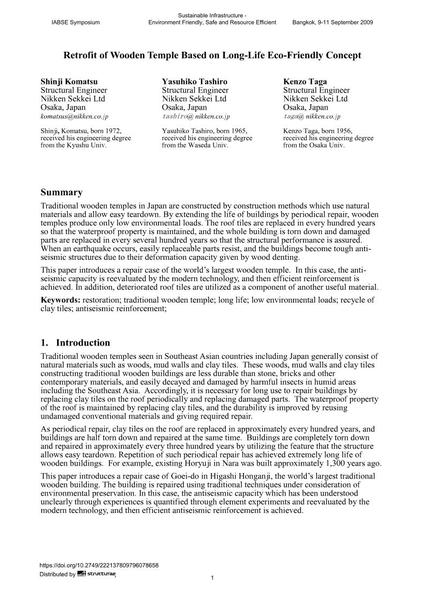Retrofit of Wooden Temple Based on Long-Life Eco-Friendly Concept

|
|
|||||||||||
Bibliographic Details
| Author(s): |
Shinji Komatsu
Yasuhiko Tashiro Kenzo Taga |
||||
|---|---|---|---|---|---|
| Medium: | conference paper | ||||
| Language(s): | English | ||||
| Conference: | IABSE Symposium: Sustainable Infrastructure - Environment Friendly, Safe and Resource Efficient, Bangkok, Thailand, 9-11 September 2009 | ||||
| Published in: | IABSE Symposium Bangkok 2009 | ||||
|
|||||
| Page(s): | 135-144 | ||||
| Total no. of pages: | 8 | ||||
| Year: | 2009 | ||||
| DOI: | 10.2749/222137809796078658 | ||||
| Abstract: |
Traditional wooden temples in Japan are constructed by construction methods which use natural materials and allow easy teardown. By extending the life of buildings by periodical repair, wooden temples produce only low environmental loads. The roof tiles are replaced in every hundred years so that the waterproof property is maintained, and the whole building is torn down and damaged parts are replaced in every several hundred years so that the structural performance is assured. When an earthquake occurs, easily replaceable parts resist, and the buildings become tough anti- seismic structures due to their deformation capacity given by wood denting. This paper introduces a repair case of the world’s largest wooden temple. In this case, the anti- seismic capacity is reevaluated by the modern technology, and then efficient reinforcement is achieved. In addition, deteriorated roof tiles are utilized as a component of another useful material. |
||||
| Keywords: |
restoration Long Life traditional wooden temple low environmental loads recycle of clay tiles antiseismic reinforcement
|
||||
